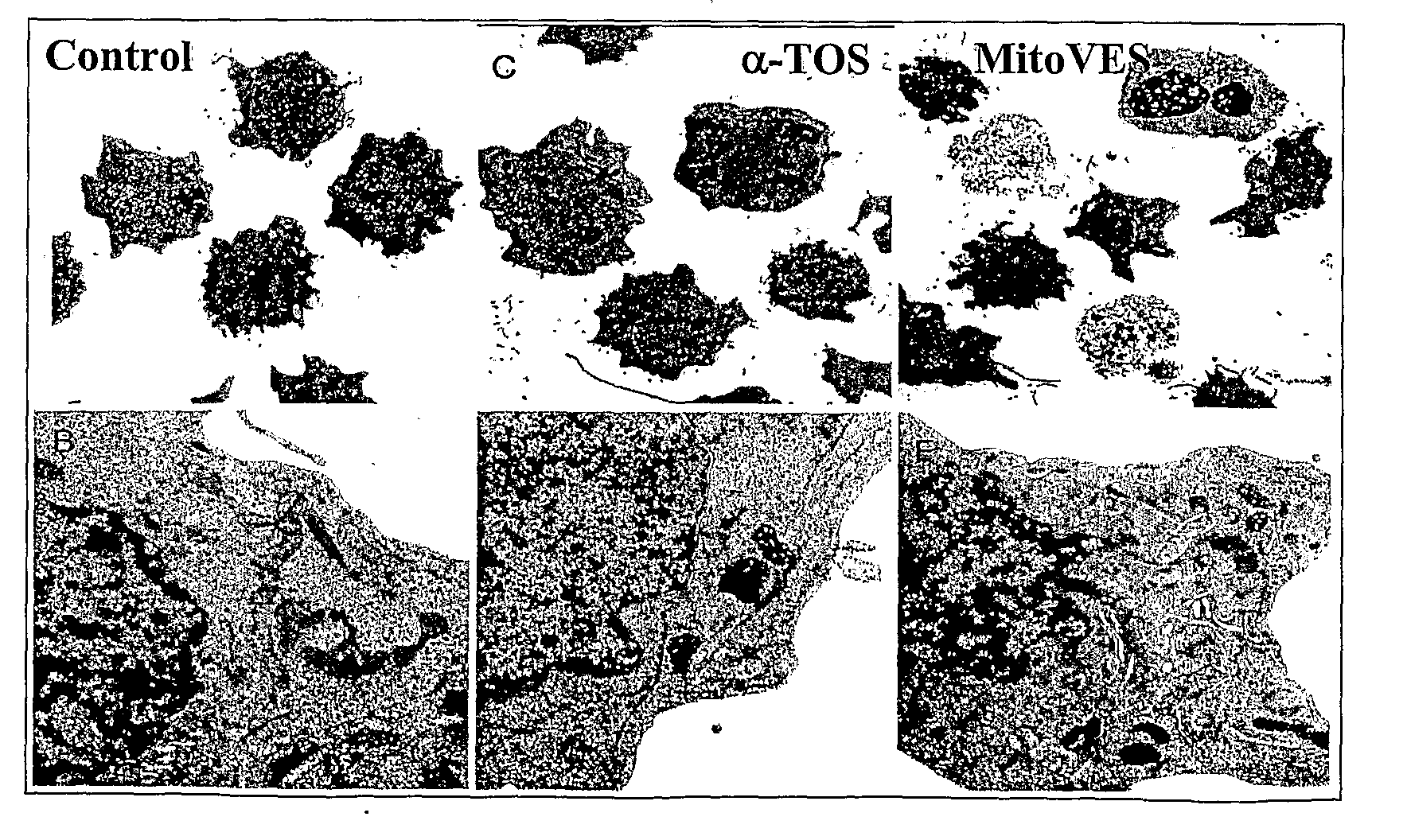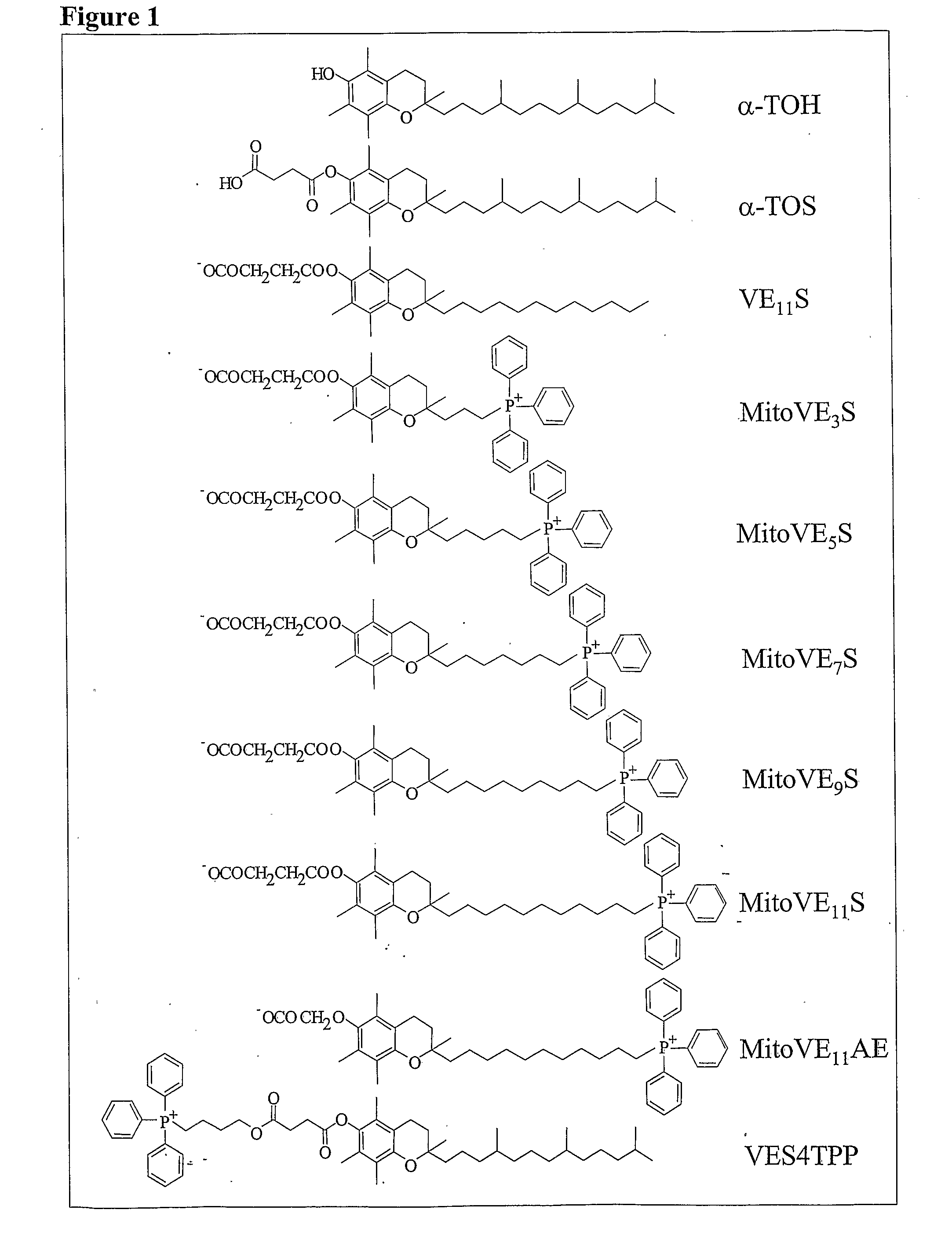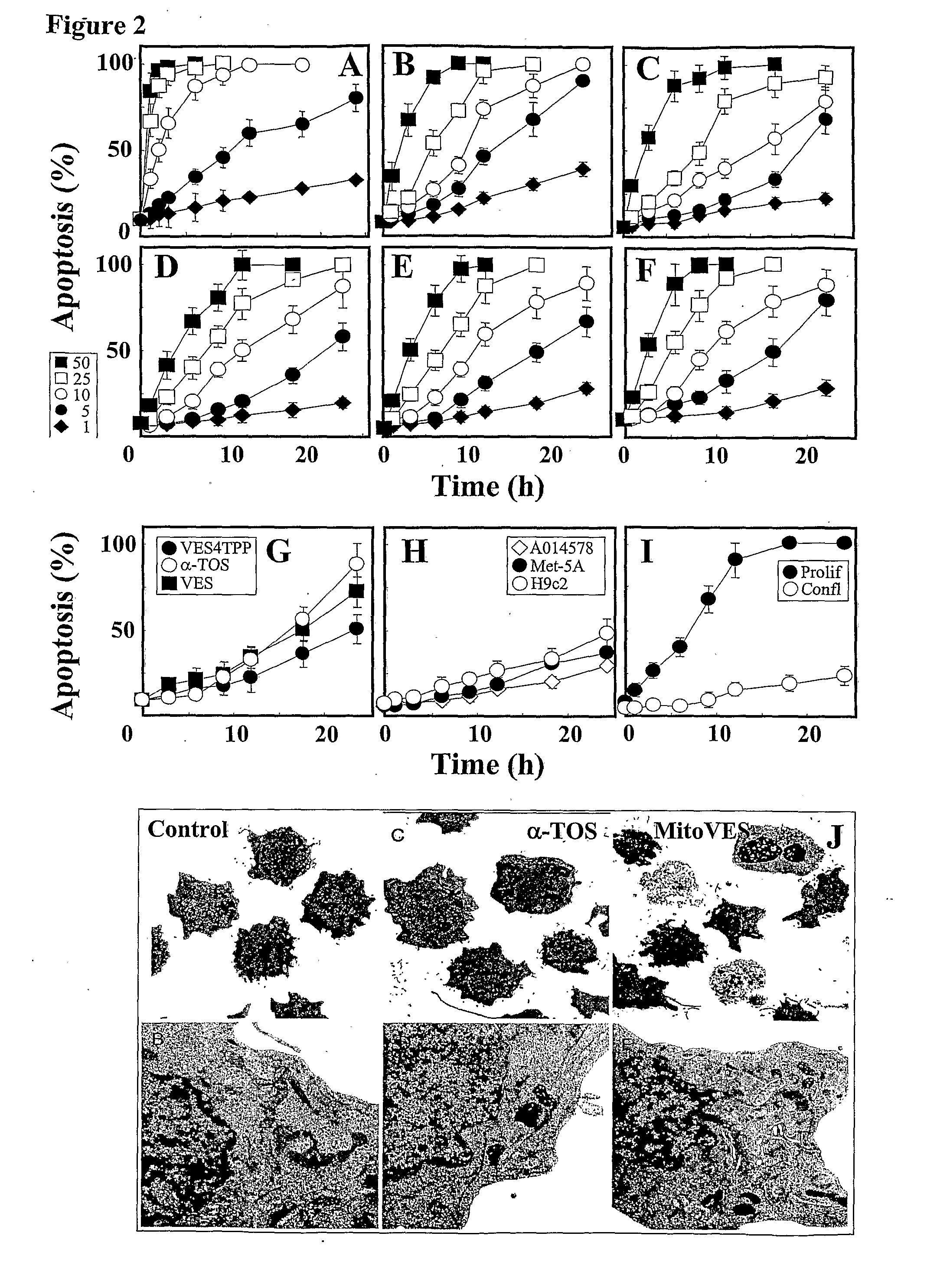Mitochondrially Delivered Anti-Cancer Compounds
a technology of prooxidant and mitochondrials, applied in the field of anticancer compounds, can solve the problems of complete loss of pro-apoptotic activity, demise of cells, and obsolete anti-cancer drugs
- Summary
- Abstract
- Description
- Claims
- Application Information
AI Technical Summary
Benefits of technology
Problems solved by technology
Method used
Image
Examples
example 1
MitoVES Selectively Kill Cancerous Cells
[0141]FIG. 2 shows that mitochondrially targeted redox-silent analog of vitamin E has a considerably higher apoptogenic effect against cancer cells and anti-cancer activity compared to its untargeted α-TOS counterpart, whilst maintaining its selectivity for cancer cells. In particular, MitoVE11S (Mito-α-TOS) was found to be up to 50-fold more apoptogenic than the prototypic α-TOS in cancer cells.
[0142]IC50 values of α-TOS, VES4TPP and MitoVE11S (labelled “MitoVES”) for different malignant and non-malignant cells are shown in Table V below.
TABLE VCell typeaα-TOSVES4TPPMitoVESJurkat 18 ± 3b21 ± 50.48 ± 0.1 MM-BI26 ± 4n.d.1.4 ± 0.3Meso-229 ± 528 ± 62.4 ± 0.5Ist-Mes24 ± 5n.d.2.2 ± 0.3Ist-Mes-221 ± 3n.d. 1.1 ± 0.25MCF-722 ± 419 ± 31.9 ± 0.5MDA-MB-45328 ± 5n.d.3.3 ± 0.7HCT-11631 ± 6n.d.2.8 ± 0.8AE-1733 ± 5n.d.3.1 ± 0.7H9c2>100>10054 ± 8 HL-1>100>10048 ± 6 Met5A69 ± 8n.d.21 ± 4 EAhy926c>100n.d.32 ± 6 9.5 ± 2.7n.d.0.7 ± 0.2aJurkat cells were treated ...
example 2
MitoVES Causes Apoptosis in Proliferating but not Arrested Endothelial Cells
[0149]The results of FIG. 6 show that MitoVES (MitoVE11S) causes apoptosis in proliferating but not arrested endothelial cells due to accumulation of ROS, thus revealing its potential as a potent anti-angiogenic agent. Hence, MitoVE11S is an effective inhibitor of angiogenesis and has direct anticancer effects by killing cancer cells via apoptosis.
example 3
MitoVES Inhibits Angiogenesis In Vitro
[0150]The wound-healing, tube-forming and apoptosis assays of FIG. 7 shows that MitoVES (MitoVE11S) inhibits angiogenesis in vitro, thus again affirming its potential as a potent anti-angiogenic agent.
[0151]As with α-TOS, MitoVE11S has a very potent anti-angiogenic activity in targeting and killing proliferating endothelial cells. However, MitoVE11S shows a surprising 5-fold greater potency as an antiangiogenic drug. For comparable levels of effects on the same endothelial cell types, about 5-10 micromolar MitoVE11S compared to about 25-50 micromolar α-TOS is needed. (The α-TOS level was taken from Lan-Feng Dong, Emma Swettenham, Johanna Eliasson, Xiu-Fang Wang, Mikhal Gold, Yasmine Medunic, Marina Stantic, Pauline Low, Lubomir Prochazka, Paul K. Witting, Jaroslav Turanek, Emmanuel T. Akporiaye, Stephen J. Ralph, and Jiri Neuzil, Vitamin E Analogues Inhibit Angiogenesis by Selective Induction of Apoptosis in Proliferating Endothelial Cells: The ...
PUM
| Property | Measurement | Unit |
|---|---|---|
| Volume | aaaaa | aaaaa |
| Volume | aaaaa | aaaaa |
| Volume | aaaaa | aaaaa |
Abstract
Description
Claims
Application Information
 Login to View More
Login to View More - R&D
- Intellectual Property
- Life Sciences
- Materials
- Tech Scout
- Unparalleled Data Quality
- Higher Quality Content
- 60% Fewer Hallucinations
Browse by: Latest US Patents, China's latest patents, Technical Efficacy Thesaurus, Application Domain, Technology Topic, Popular Technical Reports.
© 2025 PatSnap. All rights reserved.Legal|Privacy policy|Modern Slavery Act Transparency Statement|Sitemap|About US| Contact US: help@patsnap.com



